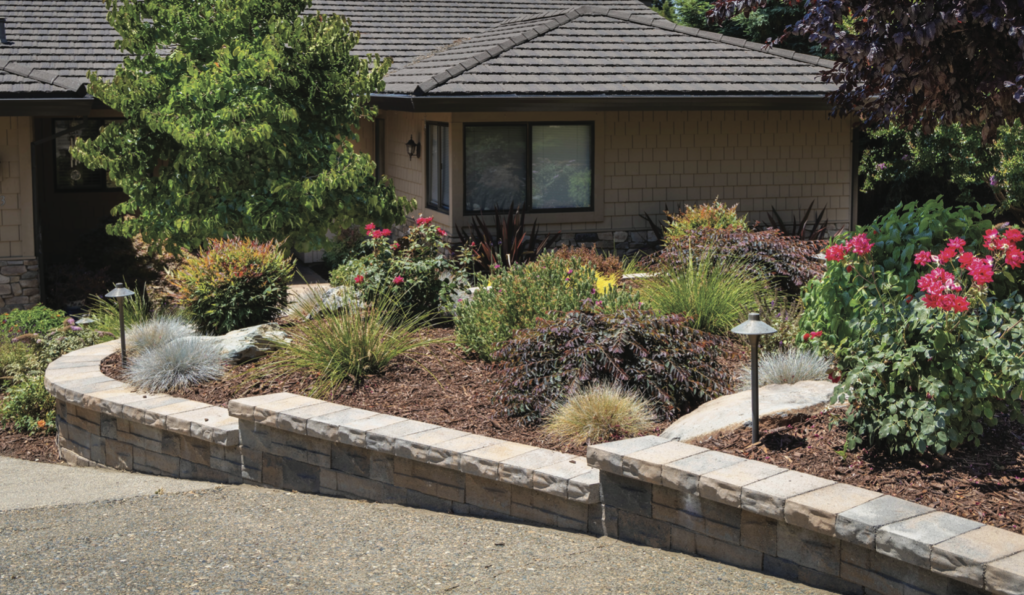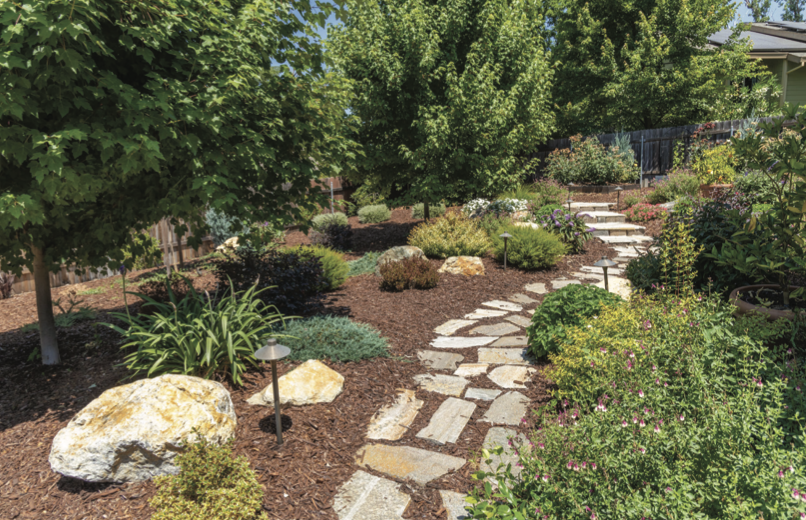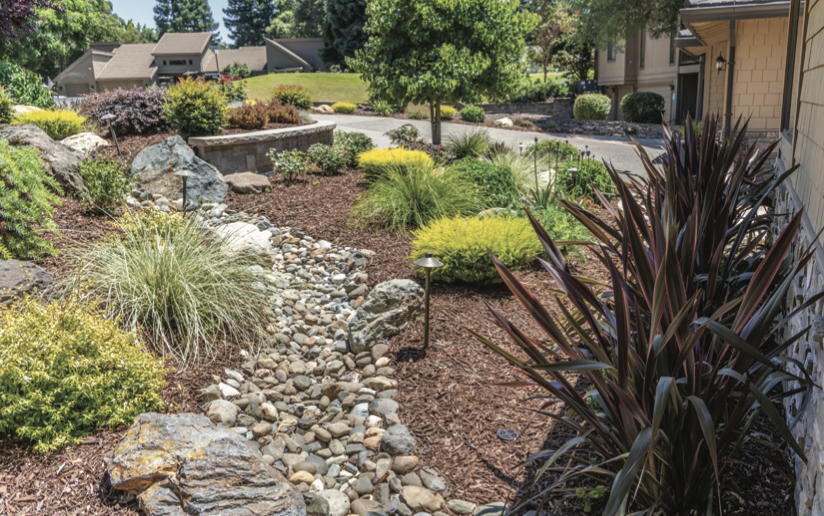Welcome to our August edition. All of the articles are a plea- sure for me to write. Sometimes the timing is off with all that I have to do, but nonetheless when I think about you guys read- ing it, I smile and feel privileged to have such a loyal reader- ship. Lee and Nancy are my clients, and their yard was featured about a year and a half ago. At that time, the landscape was only 6 months old. It is now two years old, and I am very hap- py with the growth. The secret to a landscape’s growth, which should be no secret at all, is that each plant has 2 emitters. Plac- ing one emitter per plant, which many do, is not correct if you understand how a drip emitter works. As the water from the drip emitter goes into the soil, it spreads out, but only so far. Initially, the plant with one emitter does okay, but as its roots grow and they spread out wider, especially after winter rains, they spread outside the reach of what one emitter can water. Now you have a problem, and it is seen on the plant through discolored leaves, stunted growth, pest problems and just an overall unhappy plant.

When the plant gets well-watered, as it does with two emitters and with a proper watering schedule, the plants do well. This landscape is only two years old, and you can see the growth that it has, and unlike other landscape companies, we care for our landscapes. Landscapes are not inexpensive, and to leave the client on their own is not right. In general people do not under- stand the care of a landscape, so if you need help, we are there. In fact, when I was at Lee and Nancy’s home taking pictures in preparation for this article, there were things that I saw lacking. I noticed that there was pruning, weeds, some dead plants, and the Roses needing to be dead headed, so we took care of it prior to the pictures. However, I do not want you thinking that all landscapes are high maintenance, because many that we do are not. Nancy’s is because she requested roses, and a rose is a high maintenance plant.
This was a front and backyard landscape. Living in a cul-de- sac, their yard was pie shaped, with the front being a decent size, but the back was extra-large, as if one was served 1/3 of a slice of pie. It was sizeable, with a pool in the center, and fruit trees behind it. The east side of the backyard has a driveway to a detached garage, and shade trees along the side. The west side is what is shown, which gives you a bit of an idea of the yard’s depth and width. It is a great backyard with more land than what one can use and/or maintain without help. It is great for family gatherings.

The front, prior to our landscaping was just lawn, and it was not nice lawn. Nancy’s request for the front was to have no lawn, and she wanted her planters to be level so she could tend to the plants. She also wanted a water feature, something she could hear while working in the yard. Therefore, to accomplish her request, it necessitated building a wall. This was not an inex- pensive front yard landscape, but it is such a pleasure to look at. There are many wall-type blocks, however I am partial to two. If there are curves tighter than the one shown, then I would have used the other block that I like, however with the mostly straight feature of this wall, this type is my favorite. It is more stylish, and it is more finished looking, and comes in this color along with just highlights of gray. The other blocks are nice, but very concrete looking, which makes them more appropriate for commercial use. The wall really adds to the landscape, and to the value of the home. I am very happy with it, and though it adds cost to the job, for a block wall, it is very economical. Cin- der block needs a concrete footing and rebar, and then when we are done building it, it needs to be faced with either stucco, cultured stone or veneer. So technically you are not done be- cause there is one more step. Though I personally love veneer, the block we used is already textured which gives it a nice ap- pearance. What I like most is when you are done, you are truly done, and it only requires a road base footing as opposed to concrete. This saves time and labor. With a yard of this size, I am looking to save money from the beginning, unless the cli- ent wants to spend it, then I’m on board. As mentioned, I love veneer, but it does add cost.

Gardeners, by now you should be harvesting some vegetables. Remember in order to produce a vegetable, regardless of what it is, it requires, a lot of energy from the plant. So, use organ- ic fertilizer, and do a heavy application at the start. Do a fol- low up after one month of growth, and then again in about 6 more weeks. The second and third application is a moderate amount, but not as heavy as the first. With the first, we are anx- ious for the plants to develop their root systems before the heat. Remember after fertilization, water well, and for normal water- ing, let there be at least 1-2 days of drying out, especially with tomatoes. You want them to have flavor. Too much watering makes them flavorless. Until next time good gardening.

